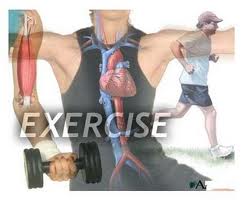How many people do you know who’ve given up an exercise program when the weight doesn’t come off immediately? Too many, I’m sure.
Now, there’s yet another study showing that there are benefits to exercise, even when the stones aren’t dropping.
The Journal of the American Medical association (JAMA) published a piece this week extolling the benefits of exercise for diabetes patients. The opinion, released to coincide with the 72nd annual Scientific Sessions of the American Diabetes Association, suggests that even moderate exercise can help treat diabetes caused by obesity. Here’s a portion of that report:
“There’s long-standing evidence that physical fitness can help people live longer, even those who carry too many pounds. Seminal research by Steven Blair, PED (then at the CooperInstitute of Aerobics Research in Dallas, Texas) and colleagues found that cardiovascular fitness is strongly associated with improved survival and is independent of body weight (Blair SN et al. JAMA. 1989;262[17]:2395-2401). Further studies have extended these findings, showing that physical fitness is closely associated with diabetes, also independent of body fatness.
There is a dramatic, steep increase in mortality among patients with very low fitness scores. “Actually, it is not fitness we are concerned about but rather low fitness,” said Carl Lavie, MD, of the John Ochsner Heart and Vascular Institute in New Orleans, who spoke at a symposium on the importance of fitness on the pathophysiology and treatment of diabetes. Although both fitness and fatness are important, cardiorespiratory fitness greatly modifies the association of obesity with death due to cardiovascular disease, he said.
The underlying mechanism, explained John Thyfault, PhD, an exercise physiologist at the University of Missouri, appears to be the key role that that muscle plays in how the body processes glucose. The best indicator for the risk of developing diabetes or cardiovascular disease is the glucose response when food is consumed. The release of insulin following food ingestion facilitates glucose transport into muscle and fat and inhibits a mechanism the body uses to keep blood glucose levels from dropping too low, hepatic gluconeogenesis (the generation of glucose in the liver from substances other than carbohydrates, such as lactate). About 80% of circulating glucose is transported into muscle, making it the most important organ in maintaining proper glucose levels.”
The researchers conclude that some of the benefit of exercise in patients with diabetes comes from NOT being sedentary, and not necessarily from being superfit. They also suggest that resistance and strength training are also important in improving the health of diabetics.


